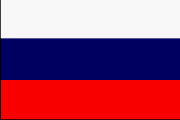





The UR-200 intercontinental ballistic missile was a two-stage, tandem, cryogenic liquid-propellant missile with a nominal payload of approximately 7000 lb. With approximately the same launching weight as the R-16 missile (138.0 T), the UR-200 was designed to carry a very large payload (3.3 T or 2.7 T depending on the nose cone]. The UR-200 was unique in that it was the first and only Soviet ICBM for which attitude control during first-stage flight was provided by hinged/gimbaled engines. The missile was to be surface and silo launched from former R-16U silos.
Development of the UR-200 was approved on 16 March 1961, to serve simultaneously as an ICBM and as a space launch vehicle. The UR-200 missile was the first missile to be developed by the NPO Mashinostroyeniya (OKB-52) under designer V. N. Chelomey. In November 1963 flight-design tests began at the Baikonur cosmodrome, and a total of nine launches were conducted, after which the program was terminated. The last flight test on 20 October 1964, was the only one to the 6,500 nm Pacific test range, and was apparently successful.
The UR-200 was not deployed operationally. The UR-200 was initiated as a technologically conservative alternative to the SS-9 SCARP, and used cryogenic liquid fuel (Liquid Oxygen and Kerosene). The successful development of the storable hypergolic propellants on the SS-9 rendered this approach obsolete, and in 1965 the development of the UR-200 missile was cancelled. The exact reasons for terminating the SS-10 weapon system program are unknown, but are believed to be related to the probable use of a cryogenic propellant combination and the success of the SS-9 weapon system.
The UR-200 flight tests were associated with the designation SS-X-10, although Western intelligence mistakenly associated these flights with the GR-1 missile that was displayed in parades in Red Square. Although the GR-1 missile had not been flight tested, it was paraded in Red Square and did receive the US-designation SS-X-10 SCRAG. The GR-1 missile was correctly identified as being a FOBS configuration, although open sources at the time evidently assumed that the FOBS parading in Red Square and the FOBS undergoing flight tests were the same system. In fact, the initial FOBS flight tests were conducted by the competing UR-200 missile. It is unclear when US intelligence understood that the parade missile and the test missile were two different systems.
Specifications | ||||||
|
DIA |
|
SS-X-10 |
||||
|
NATO |
|
N/A |
||||
|
Bilateral |
|
N/A |
||||
|
Service |
|
UR-200/UR-200B |
||||
|
OKB/Industry |
|
8K81/8K83 |
||||
|
Design Bureau |
|
OKB-52 , KB Salyut, Acad V. N. Chelomey |
||||
|
Approved |
|
3/16/1961 & 8/1/1961 |
||||
|
Years of R&D |
|
1961-1964 |
||||
|
Engineering and Testing |
|
1963-1964 |
||||
|
First Flight Test |
|
11/4/1963 |
||||
|
IOC |
|
Not operational |
||||
|
Deployment Date |
|
Not deployed, terminated 1964/1965 |
||||
|
Type of Warhead |
|
1 |
||||
|
Warheads |
|
Single |
||||
|
Yield (Mt) |
|
5 & 15 |
||||
|
Payload (t) |
|
2.690 - 3.9 - 4.0 |
||||
|
Total length |
|
34.65 |
||||
|
Total length w/o warhead |
|
30 � 32 |
||||
|
Missile Diameter |
|
3 |
||||
|
Diameter of Stabilizers |
|
4.2 |
||||
|
Launch Weight (t) |
|
136 -138 |
||||
|
Fuel Weight (t) |
|
|
||||
|
Range (km) |
|
12000 & 14000 |
||||
|
CEP (m) (Russian Sources) |
|
|
||||
|
CEP (m) (Western Sources) |
|
1800-5500 |
||||
|
Number of Stages |
|
2 |
||||
|
Canister length (m) |
|
|
||||
|
Canister length w/o Front meters (m) |
|
|
||||
|
Canister diameter (m) |
|
|
||||
|
Booster guidance system |
|
Inertial autonomous with radio correction |
||||
|
|
|
1st stage |
|
2nd stage |
|
Length (m) |
|
16.9 � 19.4 |
|
12.9 |
|
Body diameter (m) |
|
3 |
|
2.2 |
|
Fueled weight (t) |
|
|
|
|
|
Dry weight (t) |
|
|
|
|
|
Engine Designation Main Engines |
|
RD-0203/RD-0204 (8D44/8D45) |
|
RD-0206/RD-0207 (8D46) |
|
Vernier Engine Designation |
|
N/A |
|
Four Verniers |
|
Design Bureau |
|
OKB-154, Acad. S, A, Kosberg |
|
OKB-154, Acad. S, A, Kosberg |
|
Configuration |
|
Cluster of Four Engine |
|
One Main Engine and Four Verniers |
|
Years Of R & D |
|
1961-1964 |
|
1961-1964 |
|
|
|
|
|
|
|
Propellants |
|
Liquid |
|
Liquid |
|
Fuel |
|
UDMH |
|
UDMH |
|
Oxidizer |
|
(AT) Nitrogen Tetroxide |
|
(AT) Nitrogen Tetroxide |
|
Burning time (sec.) |
|
|
|
|
|
Main Engine Thrust Sea Level/Vacuum (Tonnes) |
|
50.0/57.0 |
|
58.7 Vacuum |
|
Vernier Engine Thrust Sea Level/Vacuum (Tonnes) |
|
N/A |
|
3.1 Vacuum |
|
Total Thrust Sea Level/Vacuum (Tonnes) |
|
200 |
|
62.5 - 71.1 Vacuum |
|
Specific Impulse Main Engines (sec.) |
|
278/311 |
|
297 |
|
Specific Impulse Vernier engine (sec.) |
|
N/A |
|
322 - 326 |
|
Basing Mode |
|
Soft Site Land Based |
|
Hardness |
|
N/.A |
|
Launching Technique |
|
Hot |
|
Deployed boosters |
|
N/A |
|
Test Boosters |
|
|
|
Warheads Deployed |
|
|
|
Deployment Sites |
|
N/A |
|
Training Launchers |
|
N/A |
|
Space Booster Variant |
|
No |
